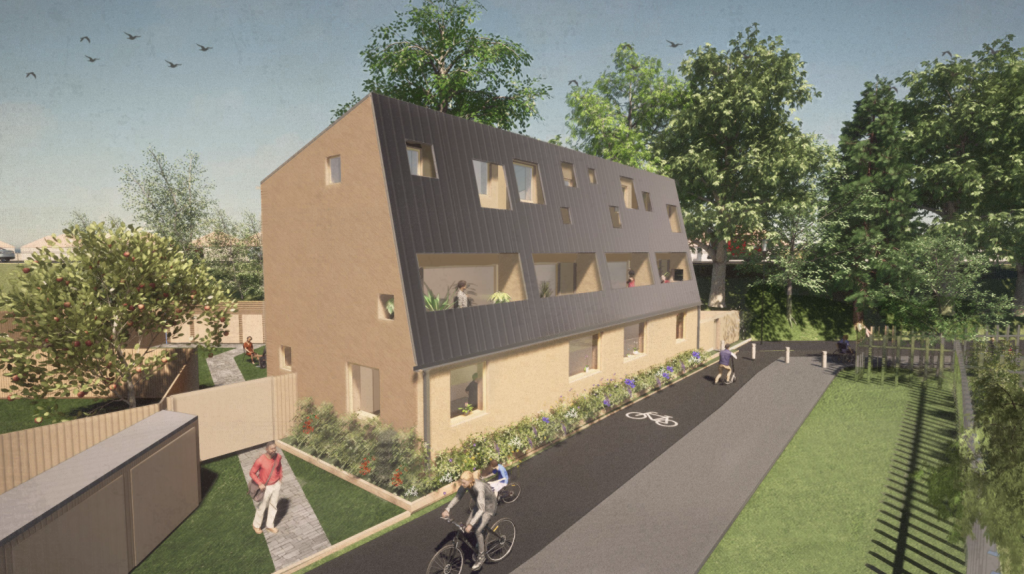Last month we got the exciting news that Oxford City Council had successfully applied to the Housing Advisors Program (HAP) for £19,994 to work with us and the Oxfordshire Community Land Trust to develop a blueprint for reclaiming disused land for innovative, sustainable council housing.
This project will be building on our work on Champion Way, a project in Littlemore in East Oxford which is looking to transform an unused garage site into five new social homes and received planning permission in November.

Around 600 of the council’s 2,000 garages are vacant. The HAP funding will be used to unlock the potential for building new homes on these sites and other unused pockets of land owned by the council. This will provide a pipeline of five sites which could yield around 30 homes.
HAP funding will also enable us and our partners to develop a range of approaches for working with communities to build sustainable homes on difficult brownfield sites. These could include using modular construction to build meanwhile homes as move-on accommodation before developing a site for permanent council housing.
For the first stage of the project we’ll be bringing the best of our expertise in using innovative ways of building low carbon homes on small and complicated urban sites. A feasibility study will map all of the council’s garage sites and other unused land to identify their suitability for new homes, with five sites brought forward for community-led design and planning work.
Collectively, we estimate that Oxford’s neighbourhoods have over a hundred small plots of land that could be used for new social housing. These are small sites, often with many tricky barriers to overcome, but our need for housing in Oxford trumps the challenges and there is no more important time to try. We think that together, these sites could provide at least 50 new homes.
Receiving the HAP funding will allow Transition by Design to turn ideas into action and get stuck in to figuring out how we can turn these unloved corners of Oxford into environmentally sustainable, comfortable, and well-designed social homes. As architects and urban researchers, we’re looking forward to combining the latest architectural technologies with local ingenuity and a bit of elbow grease to create the social homes that Oxford needs.
Community-led housing means that local people play a leading and lasting part in helping deliver the homes that communities need. Oxfordshire Community Land Trust’s experience of community-led development and governance means it will be well placed to lead on involving local people in the design and planning of potential projects. The planning phase will also draw on our Homemaker Oxford programme which involves homeless people in creating solutions to their housing needs.
A third and final phase of design and pre-development work will explore and develop the five sites identified in the feasibility study. This will include looking at a mix of meanwhile use and long-term projects, as well as options for modular and zero carbon homes. The council then expects to be able to submit planning applications for around 30 new homes.
The wider legacy of HAP funding will be a blueprint for community involvement in the future development of unused land for sustainable council homes. Vacant small garage sites are common in many local authority land portfolios, and the council expects to share the learning from the project with Oxfordshire’s other districts and councils participating in the HAP.
